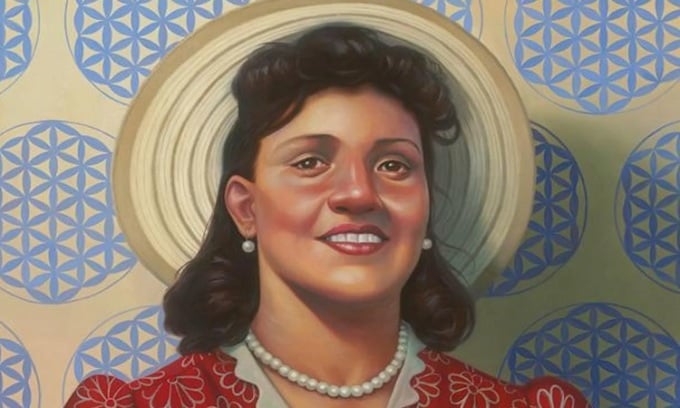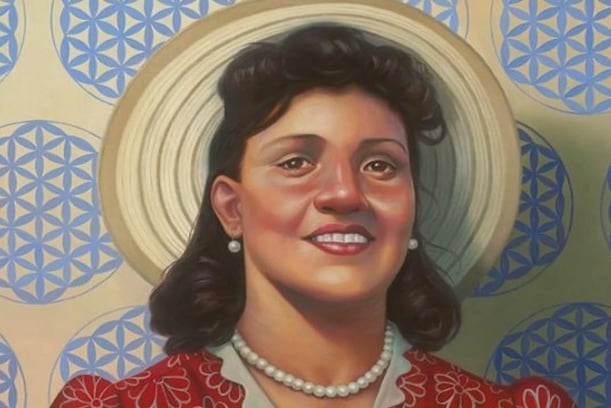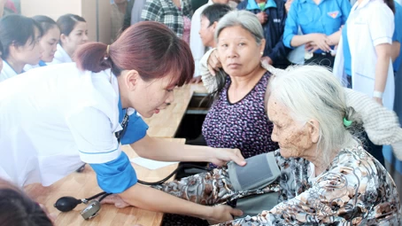When she died at the age of 31, Henrietta Lacks had no idea that her cancer cells would save millions of lives around the world years later.
Henrietta Lacks died of cervical cancer in 1951. Photo: Henrietta Lacks Foundation
Henrietta Lacks was born on August 1, 1920, in Roanoke, Virginia, USA. At the age of 31, the mother of five went to Johns Hopkins Hospital in Baltimore with cervical pain and abnormal bleeding. During an examination, doctors discovered a tumor on her cervix. Just eight months after her diagnosis, on October 4, 1951, Lacks died and was buried in an unmarked grave, according to Newsweek.
During Lacks’s hospital stay, doctors took samples of her cancer cells and sent them to the lab for analysis. These cells were unusual. While most human cells can survive only a few days in a lab, Lacks’ cells continued to grow and divide continuously, seemingly immortal. This type of “immortality” is common in cancer cells, but Lacks’ cells could reproduce exceptionally quickly. So they were used to create the first immortal human cell line, called HeLa cells, named after Lacks.
Over the past seven decades, HeLa cells have contributed to some 70,000 scientific studies, saving millions of lives. But Lacks never agreed to let researchers use her cells. It was decades later that her family learned the truth. In early August, the Lacks family finally reached a settlement to compensate her for her contribution to medical history.
Lacks' cells were used to advance understanding of the cervical cancer that took her life. In 1985, German scientists led by Nobel laureate Harald zur Hausen discovered that HeLa cells contained multiple copies of human papillomavirus 18 (HPV-18), a dangerous strain of the virus that causes cervical cancer. The discovery paved the way for the development of the HPV vaccine decades later. Today, the HPV vaccine is widely available, reducing cervical cancer rates in young women by two-thirds. HeLa cells are also used to develop treatments that slow the growth of cancer.
One of the earliest uses of HeLa cells was in the development of the polio vaccine. In 1953, a team from Johns Hopkins Hospital found that HeLa cells were an effective tool for growing large quantities of the polio virus, helping to better understand how it infects cells and causes disease. This research was later used in the development of the polio vaccine, which has prevented an estimated 1.5 million childhood deaths worldwide since 1988, according to the US Centers for Disease Control and Prevention.
Researchers have used HeLa cells extensively to understand the mechanisms by which HIV enters cells and how different drugs interact with the virus. While scientists have yet to develop a universal treatment for the disease, research on HeLa cells has allowed for the development of drugs that can limit the spread of the virus.
The DNA inside human cells is capped by short stretches of genetic material called telomeres. Telomeres protect chromosomes from tangling or fraying, but they also get shorter with each cell division. Researchers believe that telomeres play a key role in cellular aging. HeLa cells were central to the discovery of that structure and to our understanding of the biological processes that cause aging. In 2009, Elizabeth Blackburn, Carol Greider, and Jack Szostak won the Nobel Prize in Physiology or Medicine for their work in this area.
HeLa cells have also indirectly enhanced our understanding of the universe. Since 1964, HeLa cells have been sent into space to study the effects of radiation and space travel on human cells.
According to An Khang (VNE)
Source






![[Photo] Vietnamese and Hungarian leaders attend the opening of the exhibition by photographer Bozoky Dezso](https://vphoto.vietnam.vn/thumb/1200x675/vietnam/resource/IMAGE/2025/5/28/b478be84f13042aebc74e077c4756e4b)
![[Photo] General Secretary To Lam works with the Central Policy and Strategy Committee](https://vphoto.vietnam.vn/thumb/1200x675/vietnam/resource/IMAGE/2025/5/28/7b31a656d8a148d4b7e7ca66463a6894)
![[Photo] Prime Minister Pham Minh Chinh receives a bipartisan delegation of US House of Representatives](https://vphoto.vietnam.vn/thumb/1200x675/vietnam/resource/IMAGE/2025/5/28/468e61546b664d3f98dc75f6a3c2c880)
![[Photo] 12th grade students say goodbye at the closing ceremony, preparing to embark on a new journey](https://vphoto.vietnam.vn/thumb/1200x675/vietnam/resource/IMAGE/2025/5/28/42ac3d300d214e7b8db4a03feeed3f6a)
















































































Comment (0)